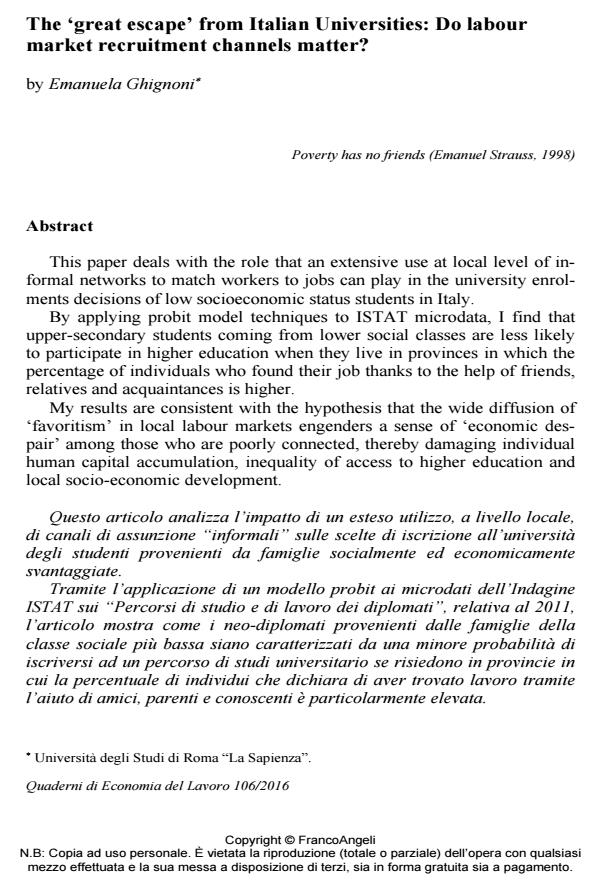The ‘great escape’ from Italian Universities: Do labour market recruitment channels matter?
Titolo Rivista QUADERNI DI ECONOMIA DEL LAVORO
Autori/Curatori Emanuela Ghignoni
Anno di pubblicazione 2017 Fascicolo 2016/106
Lingua Inglese Numero pagine 27 P. 49-75 Dimensione file 949 KB
DOI 10.3280/QUA2016-106004
Il DOI è il codice a barre della proprietà intellettuale: per saperne di più
clicca qui
Qui sotto puoi vedere in anteprima la prima pagina di questo articolo.
Se questo articolo ti interessa, lo puoi acquistare (e scaricare in formato pdf) seguendo le facili indicazioni per acquistare il download credit. Acquista Download Credits per scaricare questo Articolo in formato PDF

FrancoAngeli è membro della Publishers International Linking Association, Inc (PILA)associazione indipendente e non profit per facilitare (attraverso i servizi tecnologici implementati da CrossRef.org) l’accesso degli studiosi ai contenuti digitali nelle pubblicazioni professionali e scientifiche
This paper deals with the role that an extensive use at local level of informal networks to match workers to jobs can play in the university enrolments decisions of low socioeconomic status students in Italy. By applying probit model techniques to ISTAT microdata, I find that upper-secondary students coming from lower social classes are less likely to participate in higher education when they live in provinces in which the percentage of individuals who found their job thanks to the help of friends, relatives and acquaintances is higher. My results are consistent with the hypothesis that the wide diffusion of ‘favoritism’ in local labour markets engenders a sense of ‘economic despair’ among those who are poorly connected, thereby damaging individual human capital accumulation, inequality of access to higher education and local socio-economic development.
- Le scelte di fertilità e la durata della maternità in Italia: vincoli economici e norme sociali Debora Di Gioacchino, Emanuela Ghignoni, Alina Verashchagina, in QUADERNI DI ECONOMIA DEL LAVORO 110/2020 pp.93
DOI: 10.3280/QUA2019-110005 - Escape from parents' basement? Post COVID-19 scenarios for the future of youth employment in Italy Giulia Parola, in QUADERNI DI ECONOMIA DEL LAVORO 111/2021 pp.51
DOI: 10.3280/QUA2020-111003
Emanuela Ghignoni, The ‘great escape’ from Italian Universities: Do labour market recruitment channels matter? in "QUADERNI DI ECONOMIA DEL LAVORO" 106/2016, pp 49-75, DOI: 10.3280/QUA2016-106004